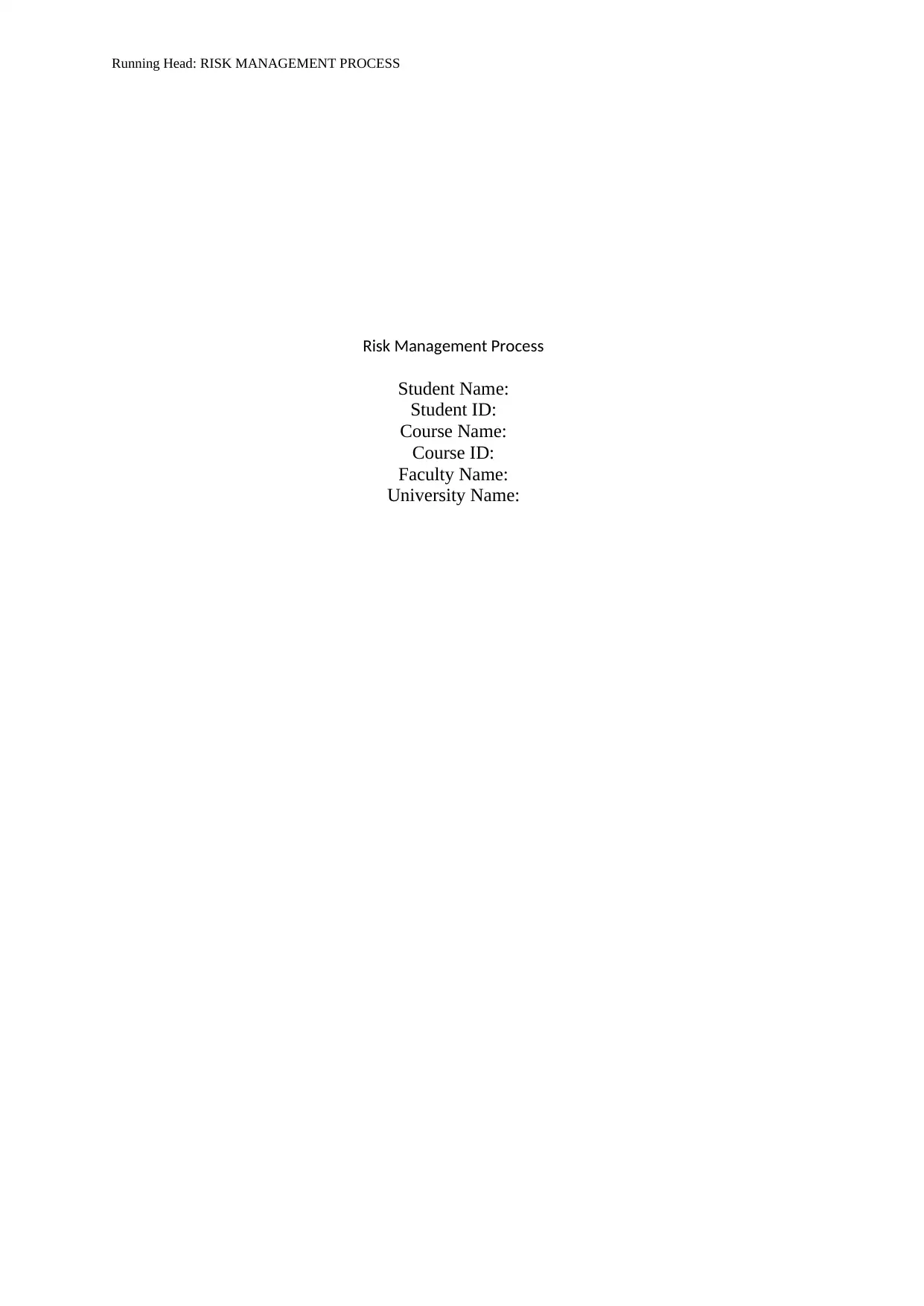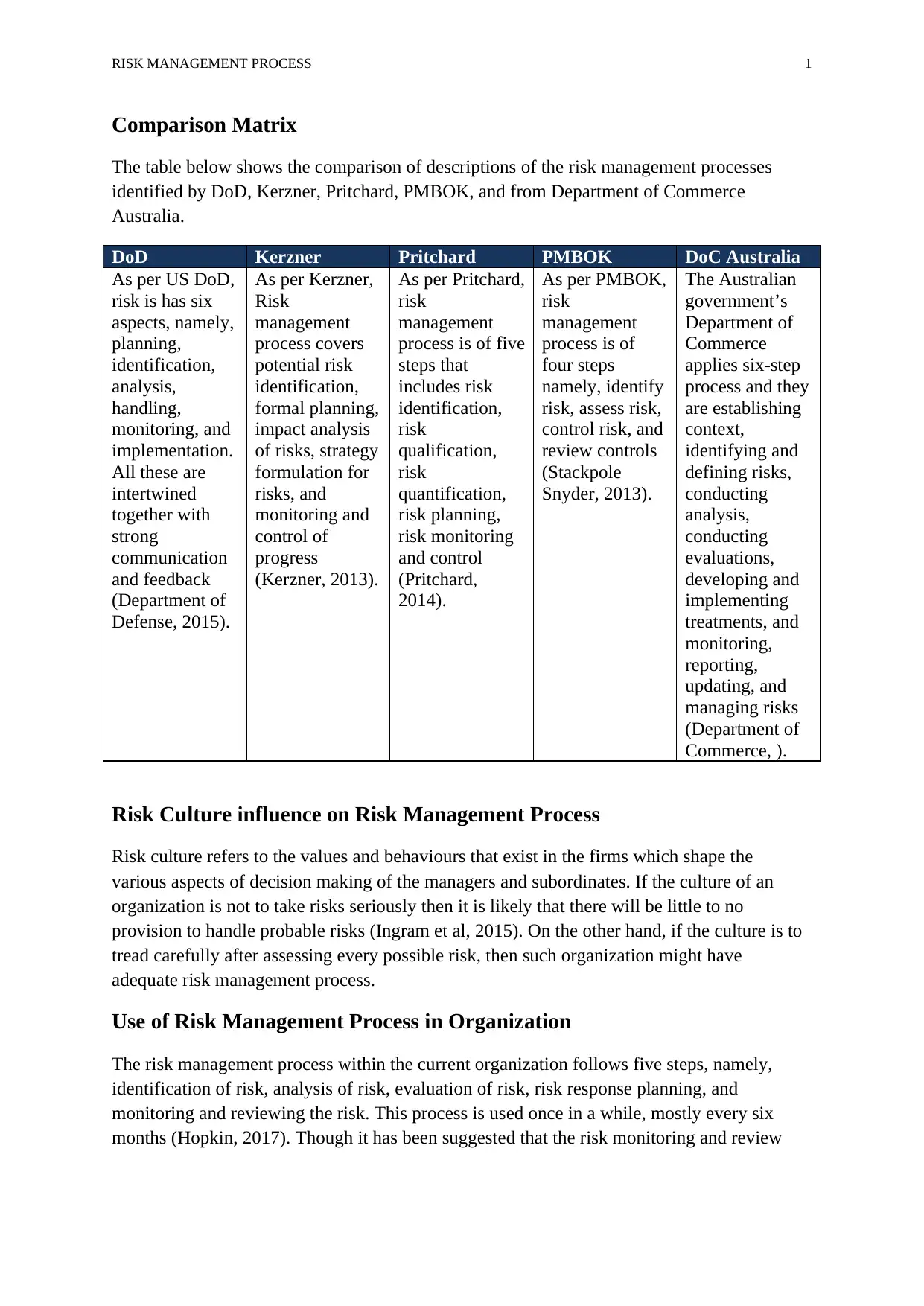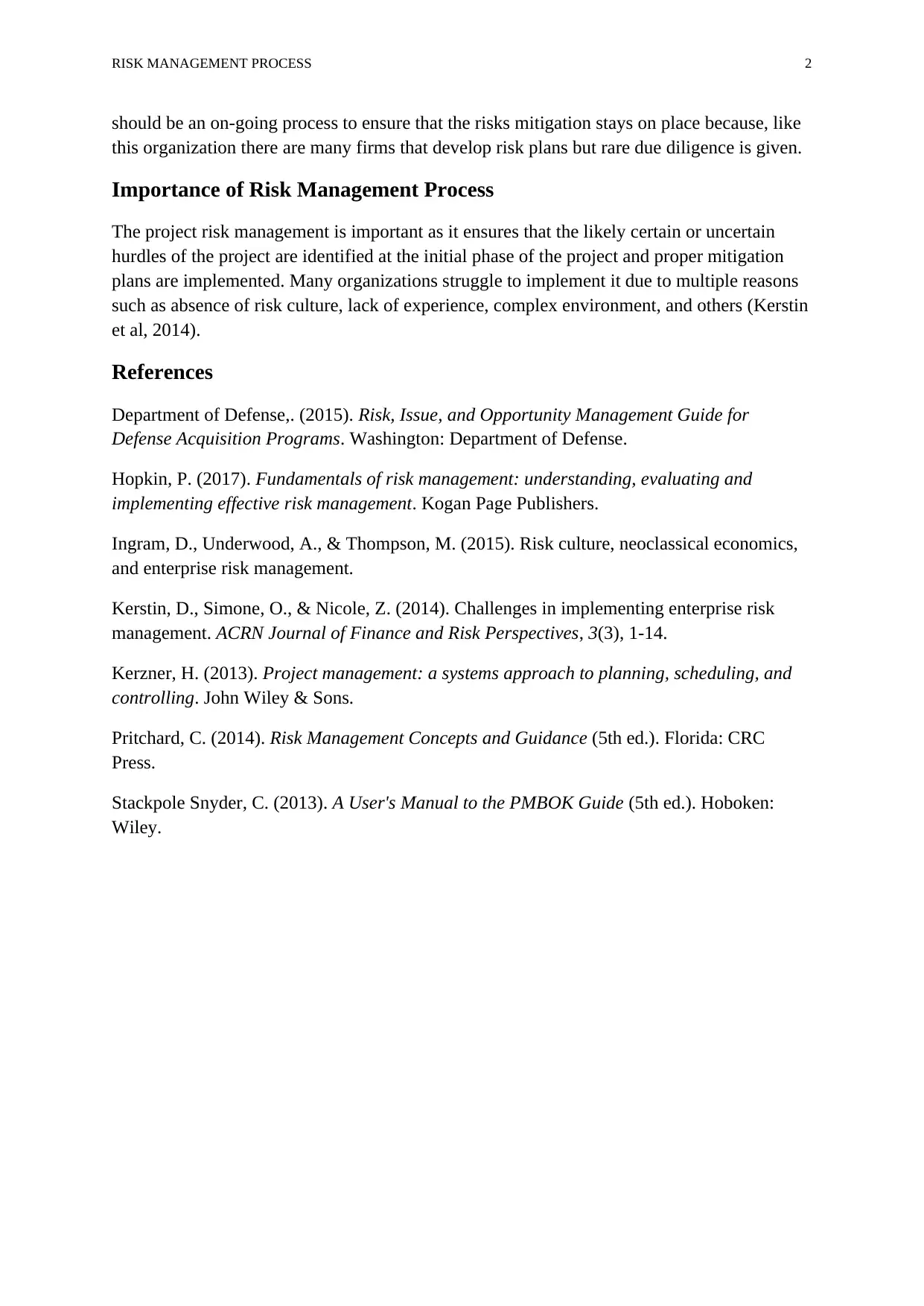Risk Management Process: Comparison and Analysis - [University Name]
VerifiedAdded on 2019/09/18
|3
|740
|196
Report
AI Summary
This report provides a comparative analysis of various risk management processes, including those defined by the Department of Defense (DoD), Kerzner, Pritchard, PMBOK, and the Department of Commerce Australia. The report highlights the key steps and aspects of each process, such as planning, identification, analysis, handling, monitoring, and implementation. It examines the influence of risk culture on risk management, emphasizing how organizational values and behaviors impact decision-making and risk mitigation strategies. Furthermore, the report discusses the practical application of risk management processes within organizations, referencing a five-step approach that includes risk identification, analysis, evaluation, response planning, and monitoring. It underscores the importance of consistent monitoring and review to ensure the effectiveness of risk mitigation efforts. The report concludes by emphasizing the significance of project risk management in identifying and addressing potential challenges, while acknowledging common obstacles to implementation, such as a lack of risk culture and experience.
1 out of 3









![[object Object]](/_next/static/media/star-bottom.7253800d.svg)